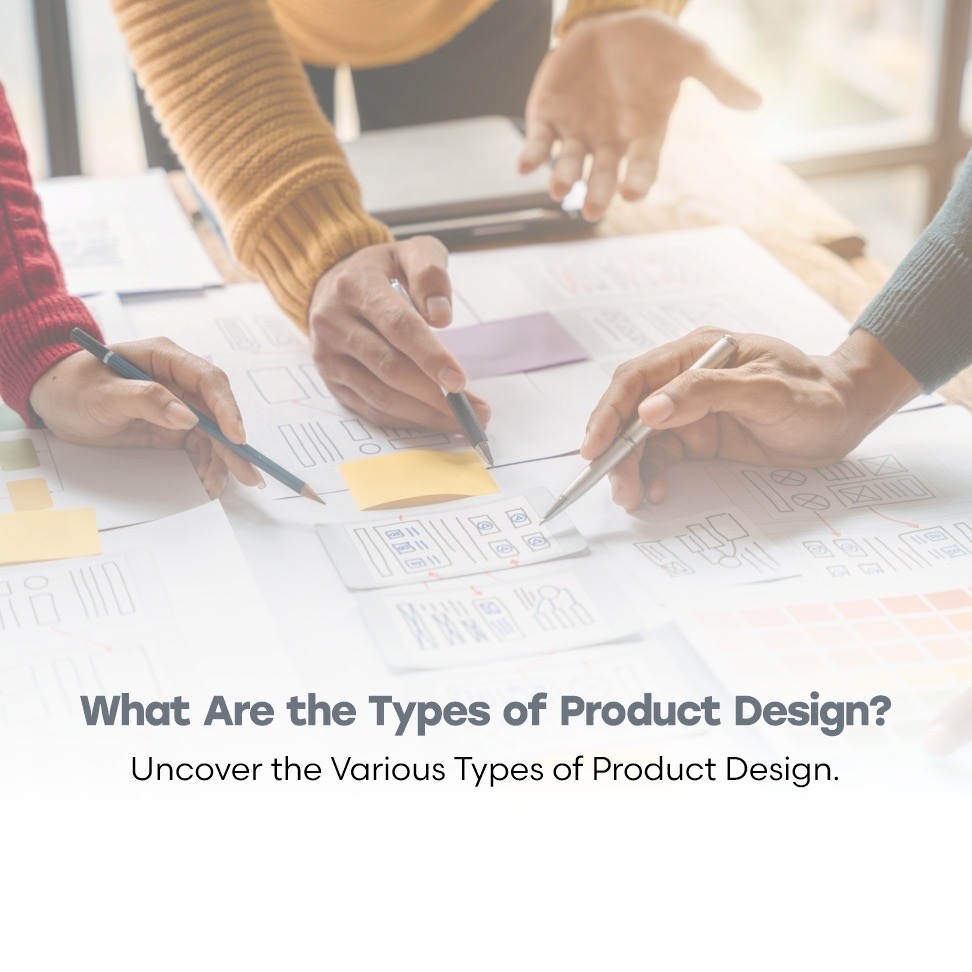Businesses that strategically approach the product design of their solutions generate 32% more revenue compared to those that do not. In product design, the significance of this is magnified, as the products and solutions you create for consumers represent your brand directly. Customers create their perceptions of your business depending on the reliability, user-friendliness, and ease of use of your products. This article examines the top product design types, providing specific examples for each one.
What Does Product Design Involve?
Product design involves creating, manufacturing, and refining products that address users’ problems or meet particular market needs. Successful product design depends on comprehending the end-user (the customer persona utilizing the product). Product designers use understanding and awareness of their potential customers’ habits, behaviors, frustrations, needs, and goals to address genuine issues for actual individuals.
Effective product design principles are visible during every stage of the product’s development. Product design is essential in the development of user experience and product offerings, starting from user research and concept creation to prototyping and usability testing. Let’s review the top product design categories.
1. Original Product Design
At the beginning of a product, the design types chain represents the initial design concept or shape. It fulfills a user’s requirement through the utilization of a creative, original concept and transforms it into the final design of a product. Creative thinking is required for a distinctive design.
Innovative concepts can frequently disrupt traditional companies as they carry the potential for groundbreaking technology with significant consequences. Two different versions of the original design exist. A unique, innovative product design influenced by the latest scientific discoveries and technological progress and an original product that takes existing solutions and reshapes them to offer fresh capabilities and characteristics.
Read more: What is Good Product Design?
2. System Design
A store design is a basic and familiar illustration of a system design. The shelf product designer serves as an information architect in a physical store containing a large number of items. The process of system design involves grouping items into logical categories (such as candy, snacks, cooking ingredients, dairy, etc).
Afterward, arranging these categories in a logical sequence (for example, placing various food items on one side of the store and cleaning products on the other side), ensuring that important items are prominently displayed for customers (such as sale items or new products on promotion). The system designer takes into account both the customer’s intuition and usability, as well as the business goals of the store.
3. Adaptive Product Design
This design takes shape when an established solution is altered to meet a fresh demand, leading to an innovative use. The fundamental solution concept stays the same, but its implementation is adjusted to address different problems and usage requirements. Adaptive product design should not be mistaken for adaptive design for online and graphical user interfaces, which adjust to various screen sizes, much like responsive design.
4. Variant Design
Refining the design process for products, variant design is frequently employed to improve an already existing design. One likelihood is to revamp a faulty component in a product or to lower its manufacturing expenses. Often, designers do not alter the fundamental operation or idea of the original design, focusing instead on specific elements.
For instance, they have the ability to alter the product design of an item to minimize areas of high stress, or they can opt for an alternative material to cut costs or decrease weight. Variant design is a common term used for redesigns that involve only modifying certain design traits.
5. Interface Design
The visual appeal of the product is essential for interface design. The interface prioritizes the user’s needs first, serving as a bridge between the user and the product before focusing on aesthetics and new features. The goal of the interface design is to lead the user through the product and assist them in using it intuitively.
Using the ATM as a reference, for instance, the interface should be straightforward and user-friendly for the average individual withdrawing money from the ATM. The ATM should have a user interface design that includes colors, fonts, icons, familiar buttons, and different sizes on all elements, so users can easily learn how to use it.
6. Process Design
Process design plays a vital role in eCommerce websites as it enables users to browse, select, save, add to cart, and make payments for purchased items. However, let’s think about a more concrete example: an airport. Airports, in addition to other features, contain extensive wait times, winding queues, and chambers with only one entrance and exit point.
This is due to the fact that a variety of procedures are essential for safety and efficiency, including check-in, security checks, passport control, customs, and other processes. A careful design process is crucial in this situation to guarantee the smooth operation of a very intricate ecosystem.
Read more: Product Design vs. UX Design: Understanding The Differences
Things to Note in the Types of Product Design
Although various product design types are present now and new ones may emerge with changing solutions and trends in the market, it is crucial to bear in mind that each type has specific requirements. Understanding the audience, their preferences, and habits, as well as staying up to date on trends, are crucial for creating a great user experience with your final product.
The main focus of product design should be guaranteeing user-friendly and pleasing use before addressing aesthetic considerations. The product design development should incorporate certain features that are familiar to the audience, based on the industry and vertical.
Finding a middle ground between creativity and familiarity is crucial as an overly groundbreaking product design can isolate potential consumers. Seeking assistance from a reputable product design company can be beneficial in this endeavor, therefore we recommend finding a suitable agency to collaborate with on your project.
Looking to acquire or improve your skills in product design? Explore Chigisoft today and unlock all the resources necessary to master your skills!


Leave a Reply